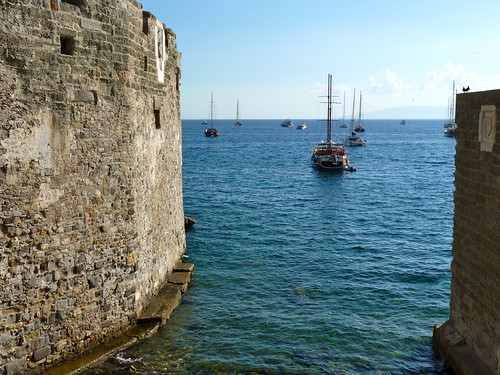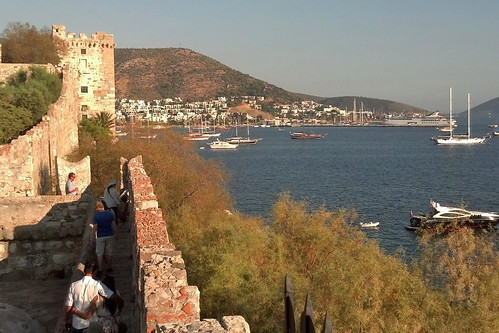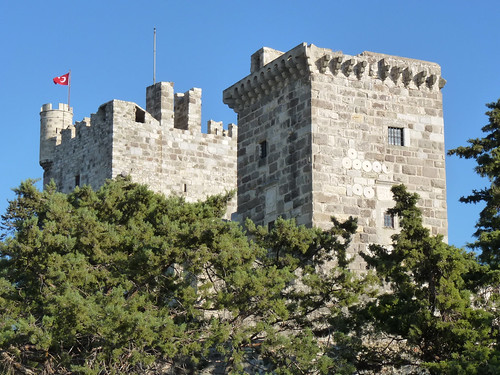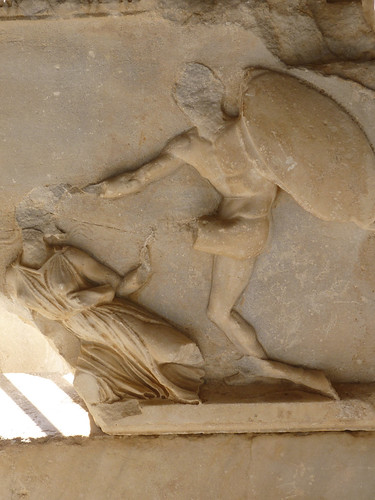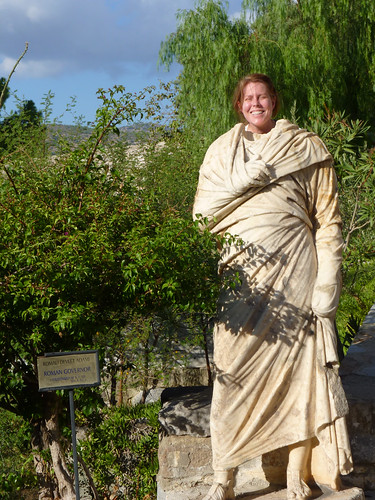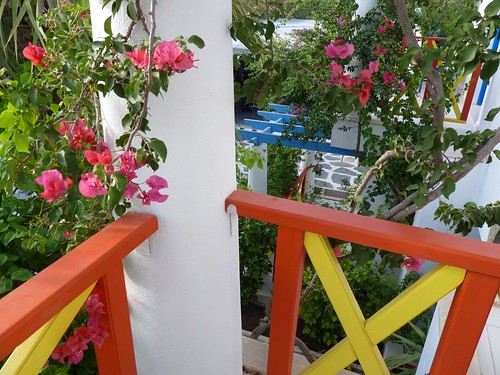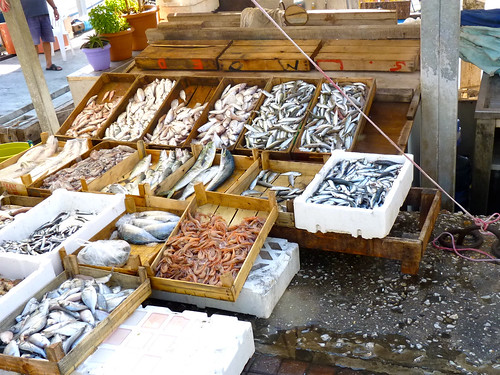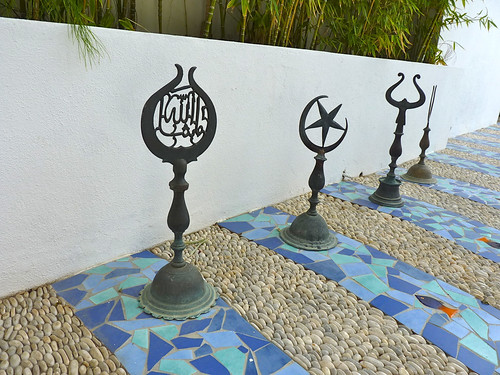Our Turkish journey ended in Bodrum, a beautiful city on the Carian coast. The Castle of St. Peter looks out over the harbor, which holds so many gulets and sailing boats, it looks like a 19th century port town.
Lots of gulets! In fact, there was a bit of a traffic jam waiting for us when we found our spot in the harbor.
Below, the magnificent bastions of the Castle of St. Peter.
A view from the castle’s protective outer walls.
The Castle of St. Peter was built in 1402 by the Knights Hospitaller, using spoilia cannibalized from the city’s most famous building, the Mausoleum of Halicarnassus, which was one of the Wonders of the Ancient World.
Here, you can see the round, doughnut-like cross-sections of the Mausoleum’s marble columns, embedded into the walls of St. Peter’s.
The knights used the great Mausoleum as their quarry, so not much is left of the Mausoleum on the original site. I’ve seen some of the reliefs from the Mausoleum on display in the British Museum. Just a few remain at the site in Bodrum.
We toured both sites, finding ruins from Greek, Roman, Byzantine, and Ottoman empires. Since we were traveling back in time, it seemed only fitting that I took on the robes of a Roman governor.
After leaving our gulet, we checked into a pretty boutique hotel in Bodrum, called the Su Otel. Everything was lush and beautiful. I took an afternoon swim in the pool while the azan went out over the loudspeakers, the muezzin’s voice calling the faithful to prayer.
The chef at the hotel found out that we liked sea bass, so he got us some fish from one of the many stands in Bodrum’s harbor. We enjoyed seeing all the fish stands–there were stray cats everywhere, and some of the fishermen would toss small fishes to the grateful kitties. Very sweet! (At this point in our travels, we were sorely missing our pets.)
The Su Otel had a water theme, so there were plenty of blue and green mosaic patterns in the courtyard, punctuated by occasional fishes. It was a perfect place to end our Turkish travels.


